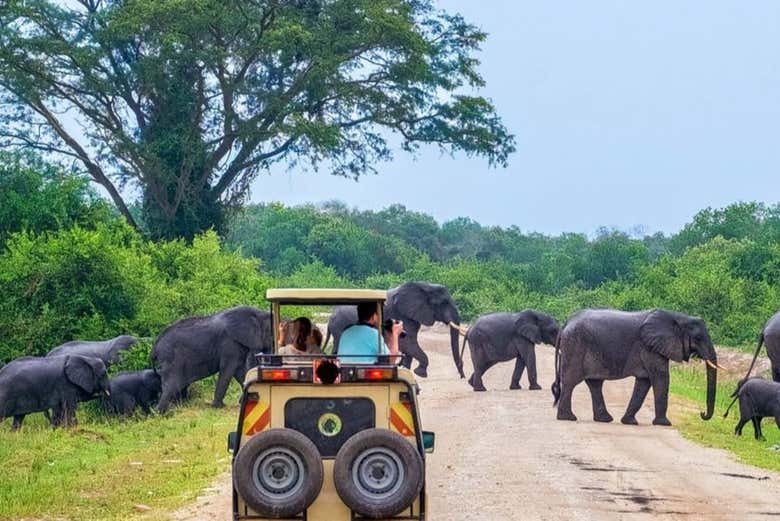If you want to write an article about another topic; you can contact me and send the topic of that essay (I will do that for you for free)
Yala National Park is a must-visit destination for anyone traveling to Sri Lanka. Located in the southeast region of the country, Yala is the second-largest national park in Sri Lanka and is home to an incredible array of flora and fauna, including elephants, leopards, and various species of birds. The park is spread over an area of 979 square kilometers and is divided into five blocks, with only two blocks open to visitors. Here is everything you need to know about visiting Yala National Park.
History and Geography:
Yala National Park was first established as a wildlife sanctuary in 1900 and was later designated as a national park in 1938. The park is located in the dry zone of Sri Lanka and is home to a range of ecosystems, including dry forests, grasslands, wetlands, and lagoons. The park is also home to several important archaeological sites, including the Sithulpauwwa rock temple, which dates back to the 2nd century BCE.
Wildlife:
Yala National Park is known for its incredible diversity of wildlife, with over 200 species of birds, 44 species of mammals, and numerous species of reptiles and amphibians. The park is particularly famous for its leopard population, with Yala having one of the highest densities of leopards in the world. Visitors to the park can also spot elephants, sloth bears, jackals, deer, crocodiles, and a variety of bird species, including the rare black-necked stork and the Sri Lankan junglefowl.
Safari Tours:
The best way to explore Yala National Park is by taking a guided safari tour. Visitors can choose from a range of tour options, including half-day and full-day tours, and can opt for a jeep safari or a guided walking tour. The park is open from 6:00 am to 6:00 pm, with early morning and late afternoon tours being the best times to spot wildlife.
Guides and Drivers:
All visitors to Yala National Park are required to hire a guide and a driver to explore the park. The guides are knowledgeable about the park's wildlife and can help visitors spot animals and birds that may be difficult to find on their own. The drivers are skilled at navigating the park's rugged terrain and can provide visitors with a safe and comfortable safari experience.
Accommodation:
There are several accommodation options available near Yala National Park, ranging from budget-friendly guesthouses to luxury hotels and resorts. Visitors can choose to stay in nearby towns such as Tissamaharama and Kirinda or opt for a more remote location within the park itself.
Best Time to Visit:
The best time to visit Yala National Park is between February and July, which is the dry season in Sri Lanka. During this time, the vegetation is sparse, making it easier to spot wildlife. The park is closed in September and October due to the monsoon season, and the high season for tourism is from December to January.
Dos and Don'ts:
When visiting Yala National Park, it is important to follow a few dos and don'ts to ensure a safe and enjoyable experience. Visitors should avoid feeding or touching the animals and should keep a safe distance from them at all times. It is also important to respect the park's rules and regulations, including the speed limit and the designated safari routes.
Conclusion:
Yala National Park is a paradise for wildlife lovers and nature enthusiasts. Its diverse ecosystems and wildlife make it a unique and unforgettable experience. With proper planning and preparation, visitors can explore the park's natural beauty and wildlife in a safe and responsible manner. So, next time you plan a trip to Sri Lanka, make sure to add Yala National Park to your itinerary for an unforgettable wildlife adventure.

Comments
Post a Comment